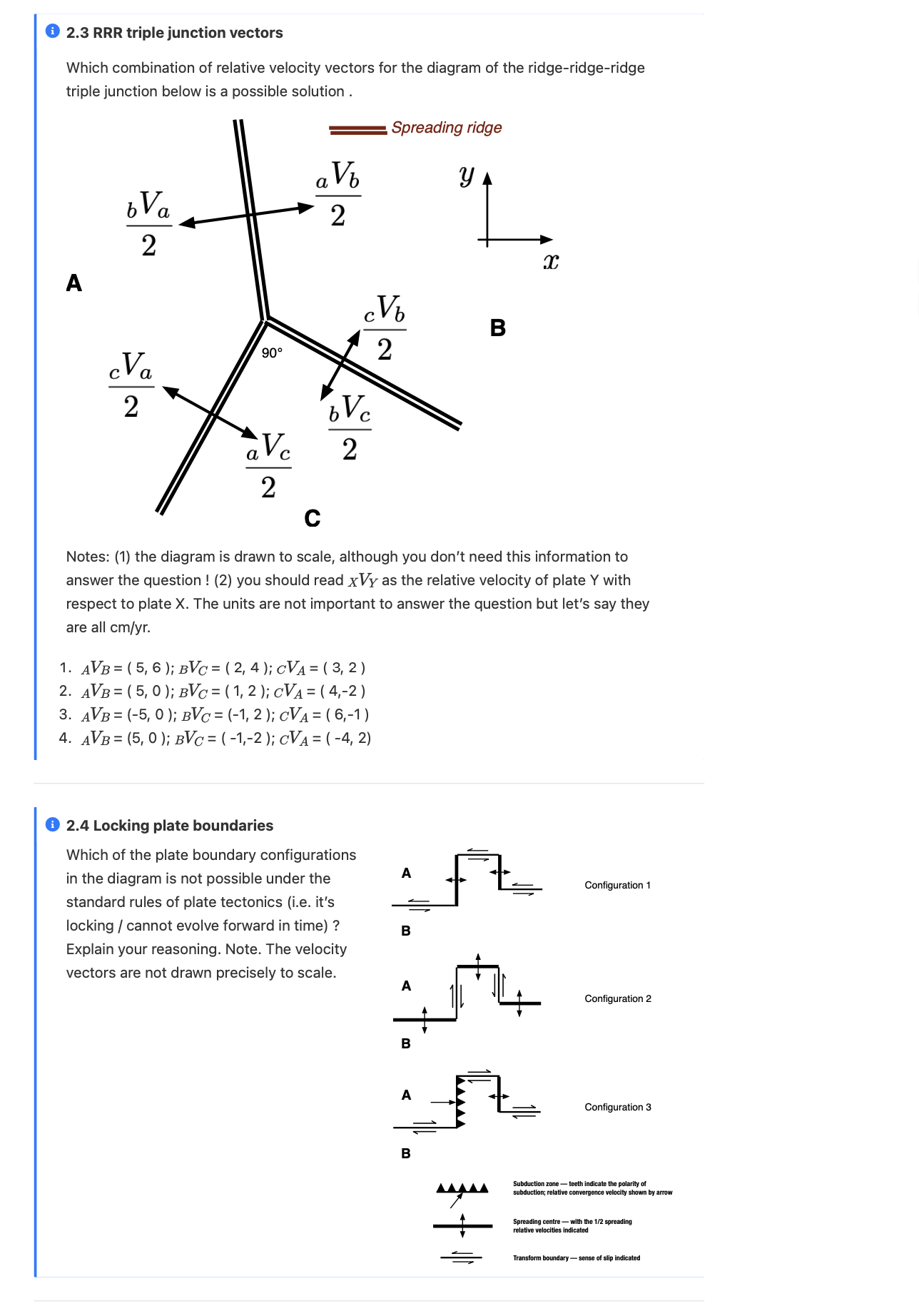Exercises#
These are demonstrations of core concepts in the course for students to explore in practical classes or tutorials.
Exercise 1, GPlates Tutorial#
An important tool for modern tectonics research is GPlates from the EarthByte group. We suggest spending some time with GPlates exploring the GPlates Portal and running through one of the available demonstrations / tutorials.
Exercise 2, Plate Kinematics#
A basic understanding of plate kinematics is helpful in understanding how systems of plates evolve and the boundary conditions they apply to the continental crust. It is also important to appreciate that the “rules” of plate boundary evolution are, in fact, emergent from complicated, multiscale systems.
You will need to read the notes on plate kinematics (section 2 of module 1) and it will help to have read John Dewey’s “PLATE TECTONICS.” Scientific American 226, no. 5 (1972): 56–72. 10.1038/scientificamerican0572-56
Exercise 3, Sandbox Compression#
Build your own mountain! We will be using a sandbox to build and run an analogue model and look at the deformation of a layered sequence of material.
Exercise 4, 3D Geometry of Rock Bodies using Google Earth#
Google Earth offers the ability to view topography in 3D, and in areas of good exposure, the interaction between topography and rock bodies can be clearly visualized by manipulating the viewer’s perspective. Through this user interaction, a much clearer understanding of how outcrop patterns related to rock structure can be gained.
Exercise 5, Stress Analysis#
Knowing the stress state of our Earth is helpful in many ways. In this exercise, we will compute stress along a certain orientation given a stress tensor, predict whether a certain plane is going to fracture with the tool of Mohr circle and discuss what type of faults will develop under one specific stress state.
Exercise 6, Granular materials, angle of repose#
The internal friction angle in a granular material is a property that controls how the material responds to shearing and it can be measured approximately just by pouring the material into a pile and seeing the shape of the cone that forms.

